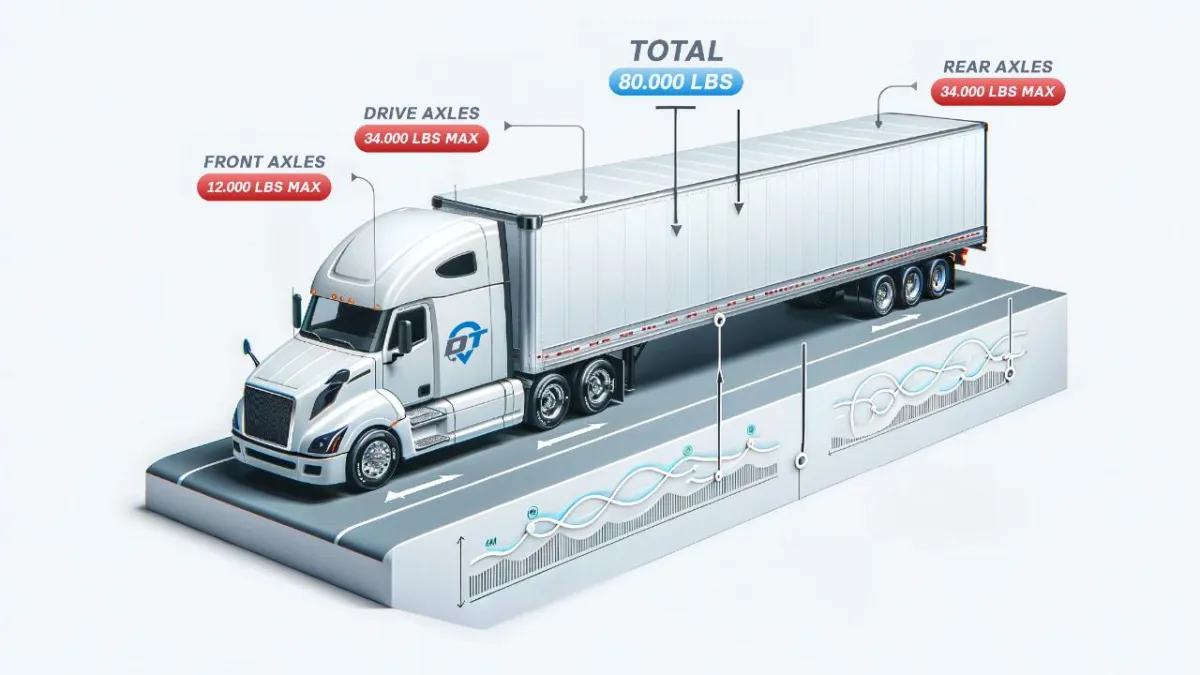
Mastering Weight Management in Trucking: A Dispatcher's Tactical Guide
"My load's overweight on one axle" – Does this sound familiar? In the trucking industry, this is more than just a statement; it's a frequent challenge that dispatchers and industry professionals encounter.
As a dispatcher, whether you're just starting out or have been in the game for years, it's crucial to understand the art of load distribution. Let's explore this with some practical examples.
Understanding Your Rig: The 18-Wheeler Breakdown
Front and Center: The Steering Wheels: These front-line heroes can bear up to 12,000 pounds. Think of them as the guides of your load journey.
The Powerhouse: Drive Axles: Located just behind the cab, these two axles can support 34,000 pounds. They're the muscle of your operation.
Remember, the legal weight limit for a fully loaded tractor/trailer is 80,000 pounds. Your job is to distribute this across the axles efficiently.
Real-World Dispatcher Dilemmas and Solutions:
Scenario: Overloading the Front Axle
Example: Your driver reports that the front axle is carrying 13,000 pounds, exceeding the legal limit.
Solution: Advise the loading team to redistribute some cargo towards the rear, ensuring the front axle is within the 12,000-pound limit.
Balancing Act: Keeping the Drive Axles in Check
Example: You've got a load that weighs 36,000 pounds, putting too much strain on the drive axles.
Solution: Work with your driver to adjust the load, possibly moving some items to a different trailer section, to comply with the 34,000-pound limit.
Case Study: Maximizing Load Without Overloading
Imagine your carrier’s truck weighs 16,000 pounds, and the trailer is 14,000 pounds. That’s 30,000 pounds even before the cargo is added.
Example: You're booking a load of construction materials. The client informs you the cargo weighs 52,000 pounds. This would bring your total to 82,000 pounds, over the legal limit.
Solution: Negotiate with the client to reduce the load to 50,000 pounds or split it into two shipments. This ensures compliance and safety.
Key Takeaways for Dispatchers:
Always keep a tab on individual truck and trailer weights.
Aim for cargo weights that keep the total load under 80,000 pounds, preferably around 50,000 pounds for operational ease.
Regular communication with drivers about load specifics is essential for smooth operations.
As a dispatcher, think of yourself as a master balancer, where every load is a new puzzle to solve. By understanding weight distribution and applying these examples in your day-to-day operations, you’ll not only prevent legal issues but also safeguard the efficiency and reputation of your fleet.
